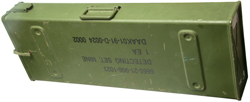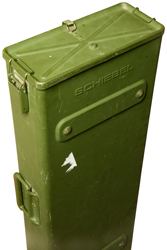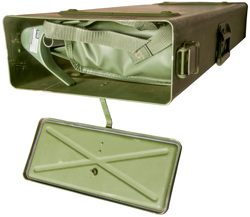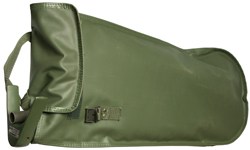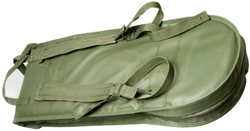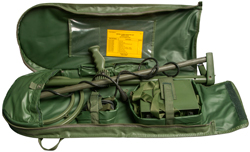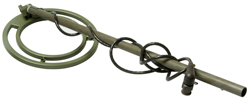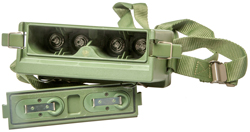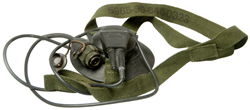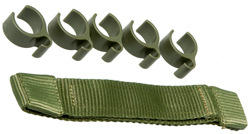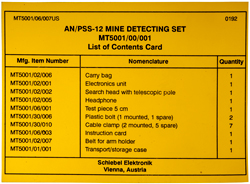AN/PSS-12 Mine Detecting Set, Schiebel AN-19/2
© Brooke Clarke 2021 Background
Description
Photos
Patents
Related
References
Links
Background
Description
Photos
Patents
Related
References
Links
Background
While working on the Metal Locators web page I learned about the PSS-12 being replaced by the PSS-14 which combines classical mine location with Ground-penetrating Radar (Wiki). By the end of W.W.II land mines were designed to have minimal metal content (Wiki: MMM). Some of the "mine detectors" made aftere W.W. II were no longer "metal detectors" but more like ground impedance measuring instruments. The PRS-7 Portable Mine Detecting Set Metallic and Non-metallic works by measuring the impedance of the ground. But the PSS-11 Mine Detecting Set and the PSS-12 are probably the last of the conventional metal detectors (Wiki).
The AN/PSS-12 is a rebranded Schiebel AN-19/2. I tried looking at patents assigned to Schiebel but don't read German so didn't find anything interesting.
Manual
TM 5-6665-298-10 Operator’s Manual AN/PSS-12 Mine Detecting Set, 28 February 1995.
Description
Some thought has gone into the metal carry case (Fig 1). There are ridges on opposite faces with dimples/bumps so that they will stack. Since the lid is on the small end the case is strong for stacking. The lid is tethered to the main case so it will not be lost, but can easily be unclipped. Whoever did the stencil painted label did it upside down. It should read correctly when the carry handle is up as shown in Fig 1. The lid includes an O-ring to seal the case and a pressure/vacuum breaking vent screw.
Photos
Patents
Related
Blasting Machines & Land Mines
Metal Locators
Newspaper article on Demining -
Polish Mine Detector -
PRS-7 Portable Mine Detecting Set Metallic and Non-metallic
PSS-11 Mine Detecting Set
References
Ref 1: SPIE Proceedings Vol 4394, Detection and Remediation Technologies for Mines and Minelike Targets VI, has many papers, this is only one of them:
Improvements to the U.S. Army's AN/PSS-12 metal detector to enhance landmine discrimination capabilities
Author(s): Larry T. Lowe; Lloyd S. Riggs; Steve Cash; Thomas H. Bell
This paper briefly reviews the fundamental operating characteristics of the AN/PSS-12 and describes modifications to the system aimed toward developing the capability to distinguish buried low-metal landmines from buried metallic clutter. Improvements were implemented to three key areas including the AN/PSS-12 hardware, method of data collection at Fort A.P.Hill, VA, and algorithm design. The improvements to the AN/PSS-12 hardware yield higher system bandwidths resulting in the ability to extract the fast decay rates associated with small metallic objects. The improvements in data collection involve exciting and measuring the response of a buried object along its three principle cardinal axes resulting in an increase of characteristic target information that can be used to further separate mine responses from clutter responses. The increase in characteristic target information yields five target parameters that characterize each of the eleven different mine types in the JUXOCO grid. A generalized likelihood ratio test (GLRT) is developed that incorporates the five target parameters. The algorithm, using the additional target information, results in an increase in landmine discrimination performance presented in a receiver operator characteristic (ROC) curve.
Lloyd S. Riggs, Auburn University,
Phd paper: Electromagnetic Induction Systems for Discrimination among Metallic Targets, Venkata Sailaja Chilaka, May 11, 2006
SERDP/ESTCP: search "UXO" - Land - Demonstration of Physics-Inspired Classification Methodologies for Munitions Response -
Links
PRC68, Alphanumeric Index of Web pages, Contact, Products for Sale
Page Created 2021 July 22
